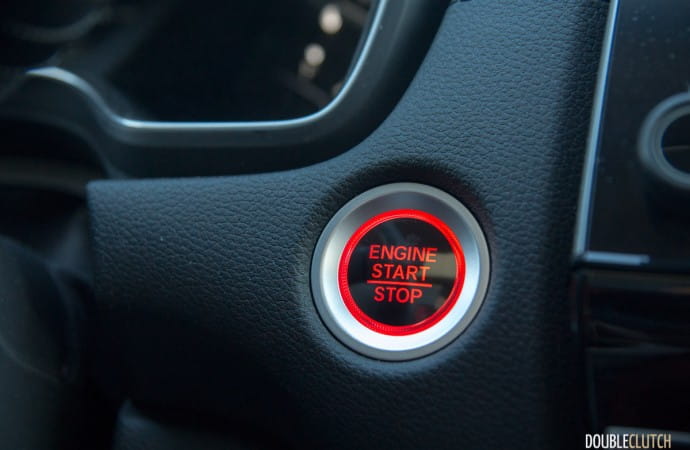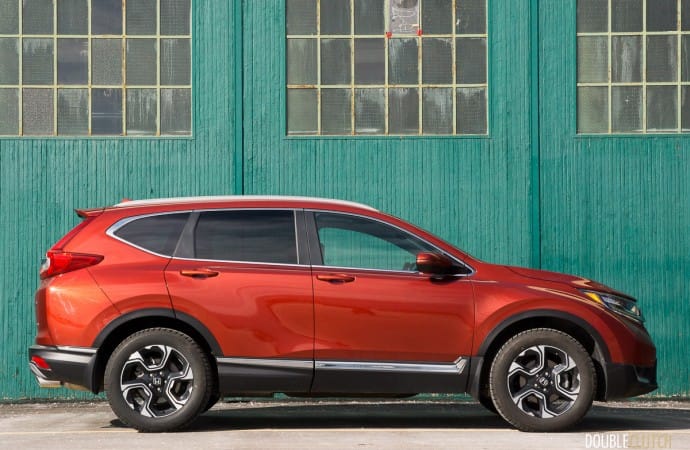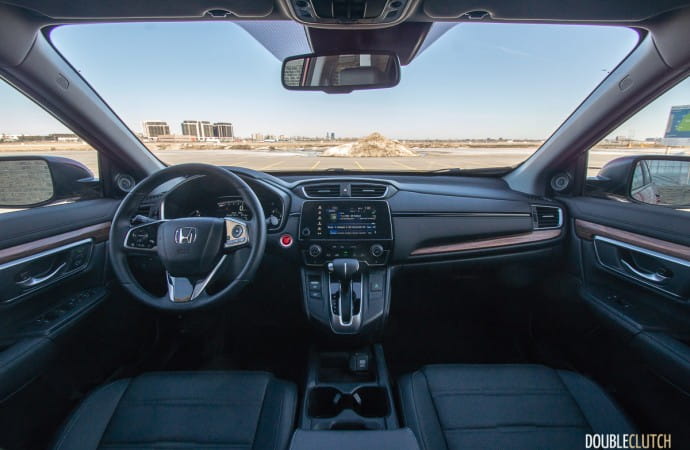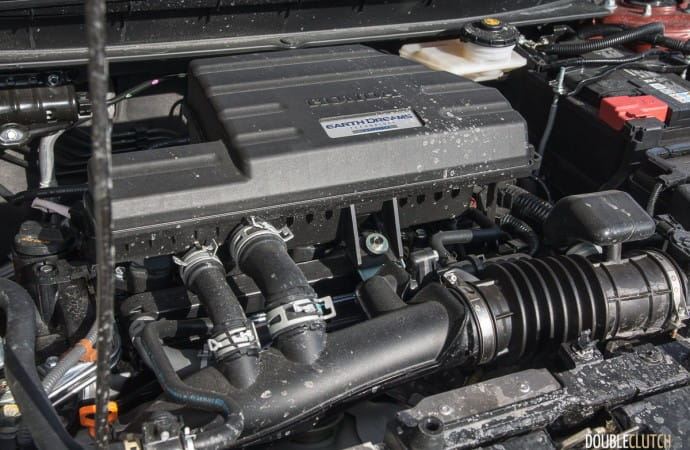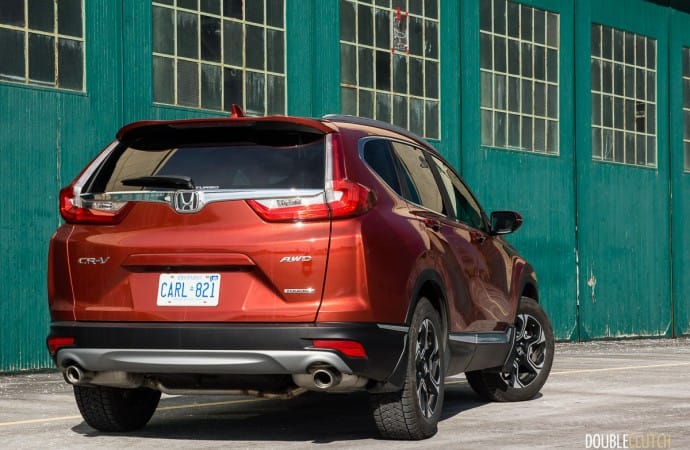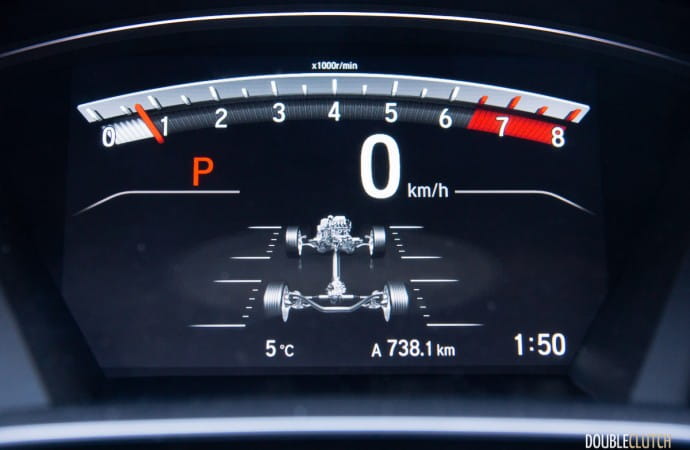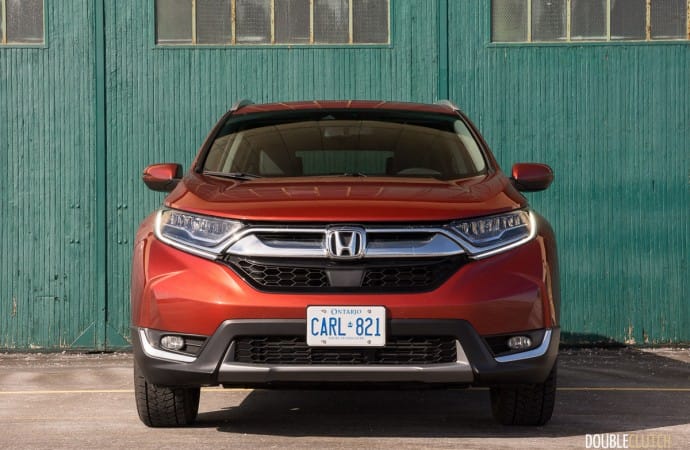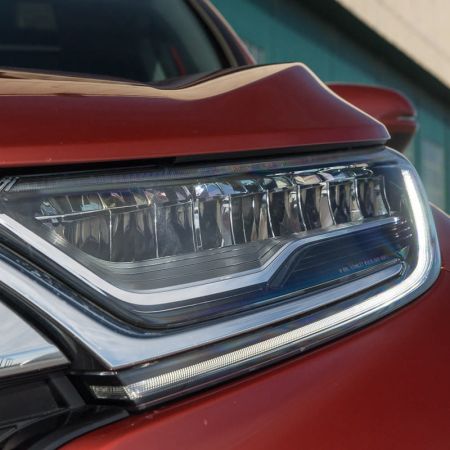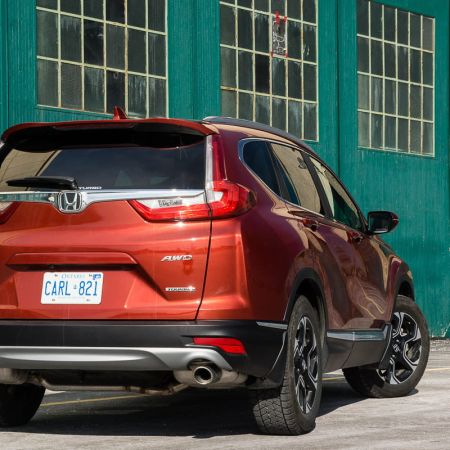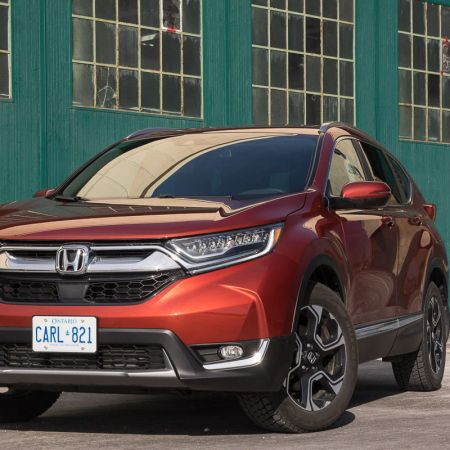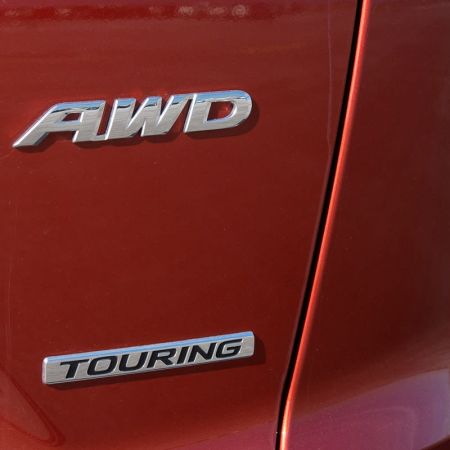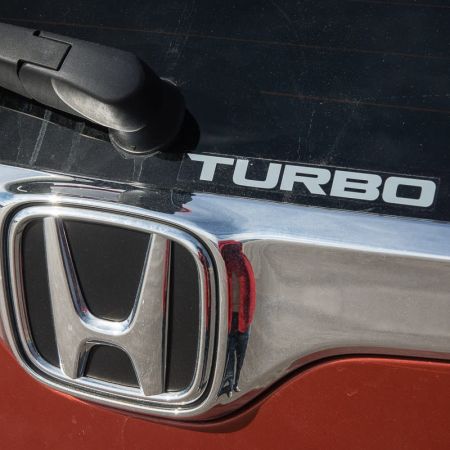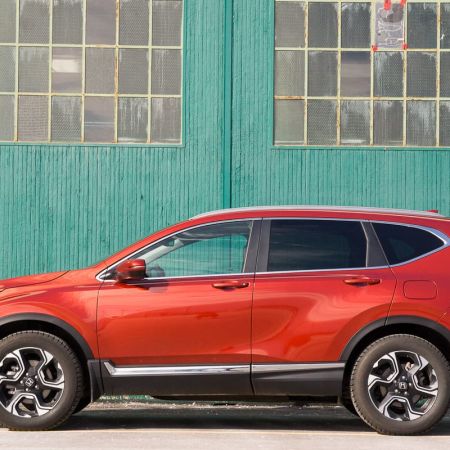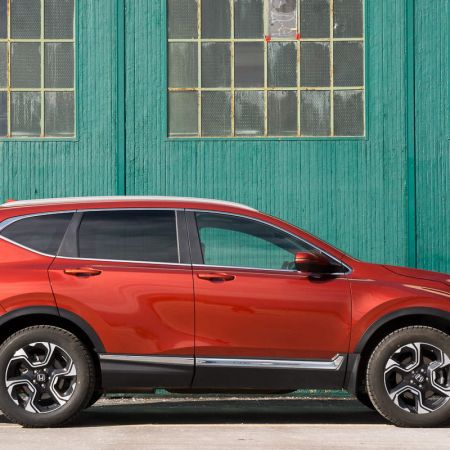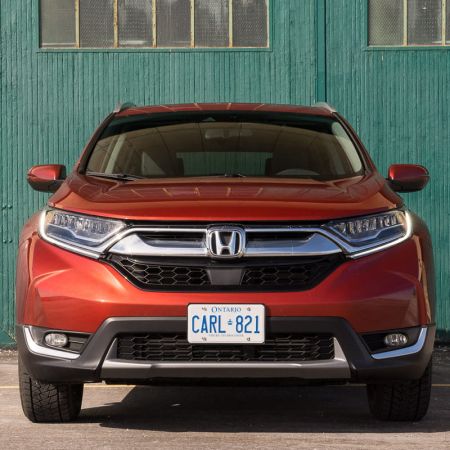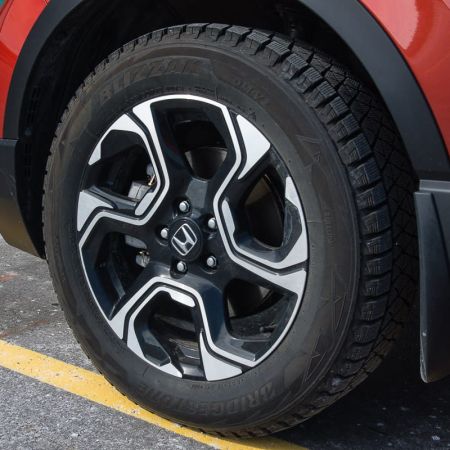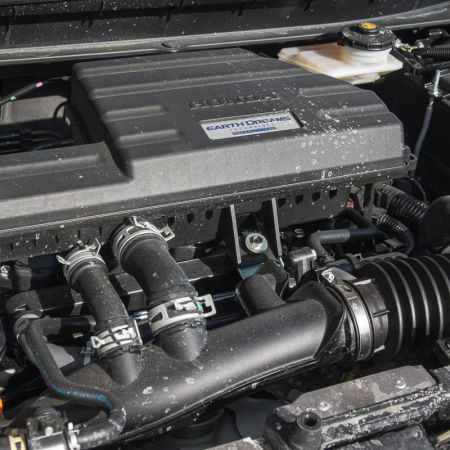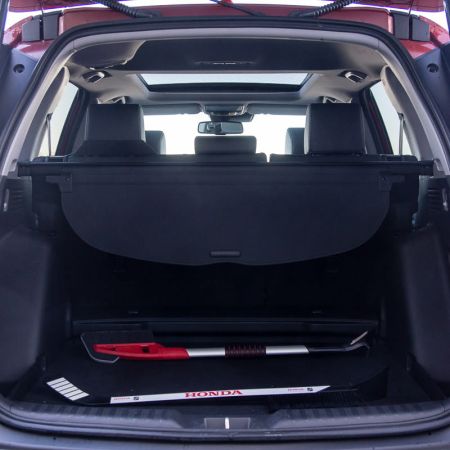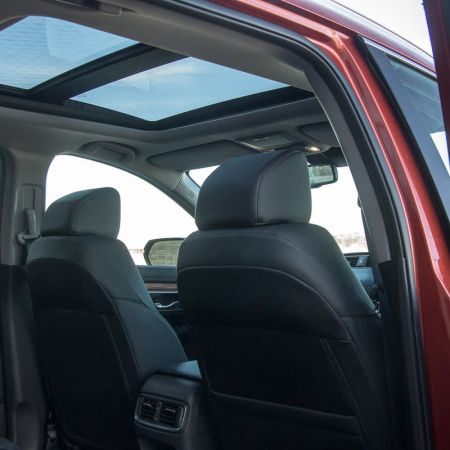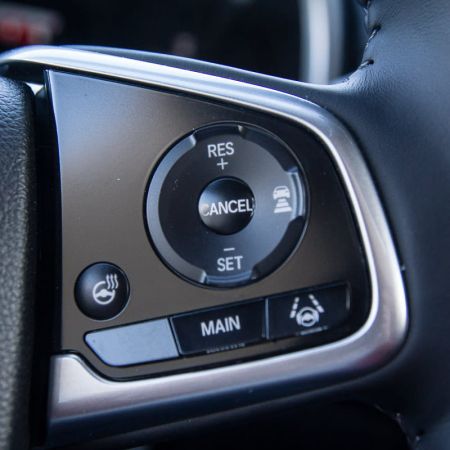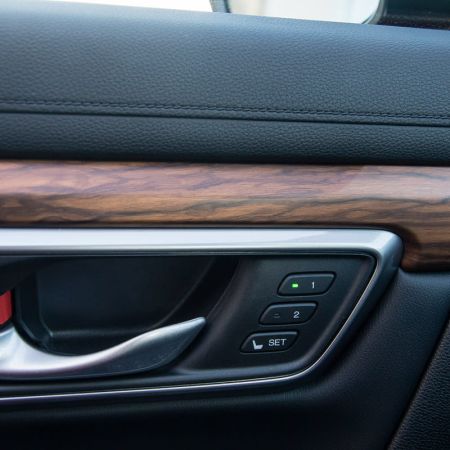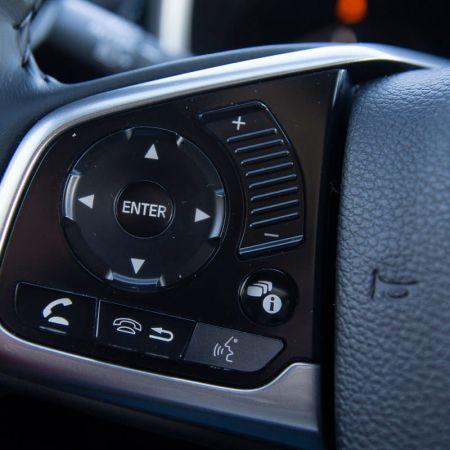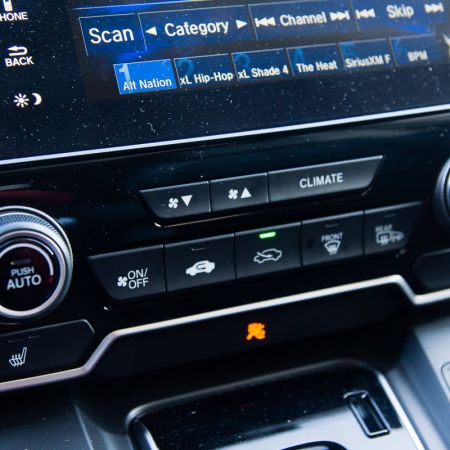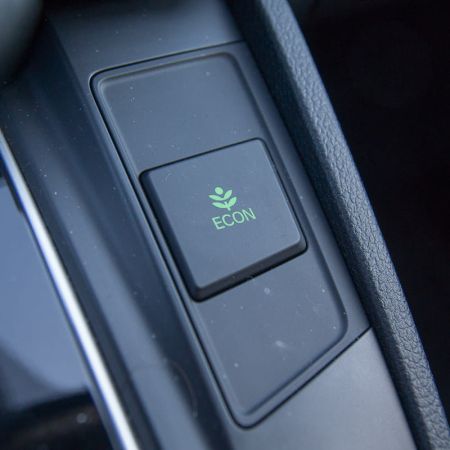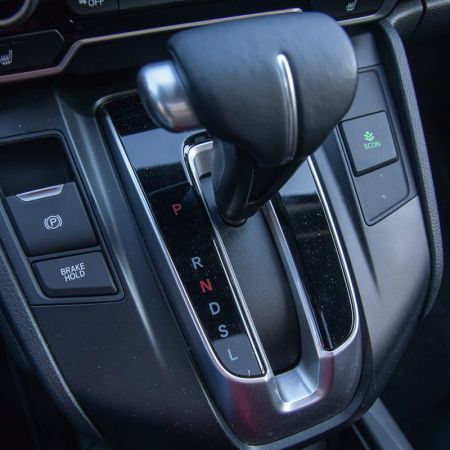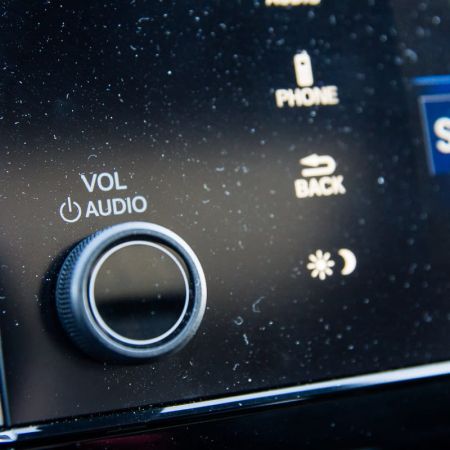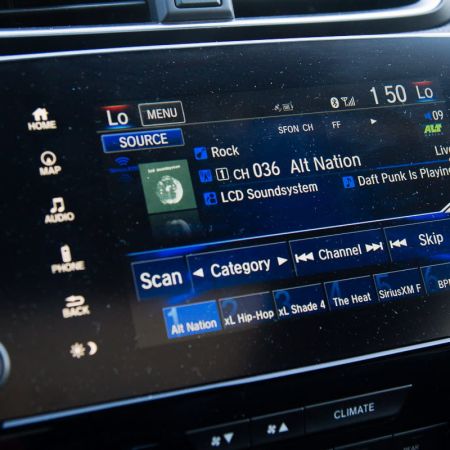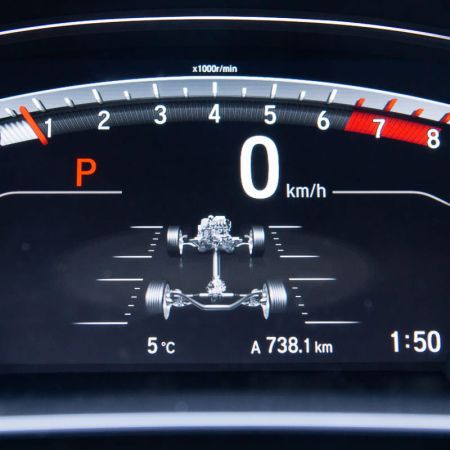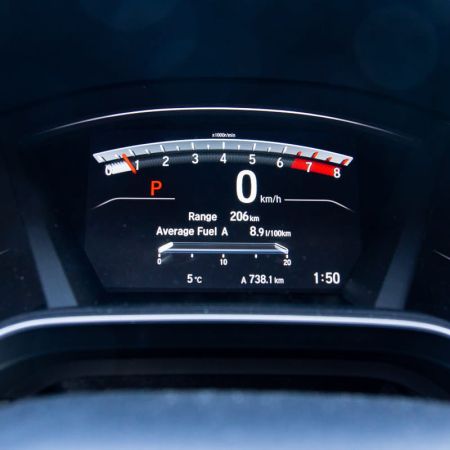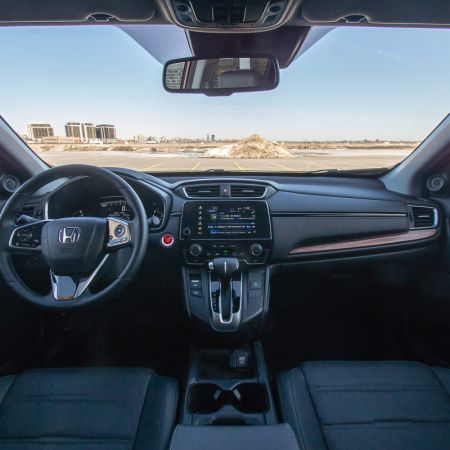Honda is probably best known for its Civic compact car. Here in Canada, it has been the best-selling car for almost twenty years. Even as families flock to crossovers, the Civic (reviewed here) still represents the majority of the bread-and-butter for Honda. It’s no coincidence that the CR-V was originally called the Civic Recreational Vehicle, and the all-new CR-V is based on the same global platform as the Civic. The outgoing fourth-generation CR-V sold up until 2016 was a dependable family hauler, but could never really be considered progressive, even in its early days. It was always a very safe choice, and families looking peace-of-mind flocked to the CR-V. Being in one of the most competitive classes means never sitting still, so Honda wanted us to check out all the new goodies. They sent over a fully-loaded Molten Lava Pearl 2017 Honda CR-V Touring AWD for testing.
Behind the Civic, the CR-V is now Honda’s second-best selling car, outpacing even the Accord (reviewed here) and Pilot family SUV. Built in Alliston, Ontario, the new fifth-generation CR-V aims to chart a different course – one that hopes to stand out in the sea of cookie-cutter crossover utility vehicles (CUVs). While the look is definitely different, it’s more in-line with Hondas of today, with available full-LED headlights making up a front-end that is similar in design language to the new Civic. Even the side profile isn’t much different from the previous-generation CR-V, complete with the up-kick in the windows behind the second-row of seats. The taillights are a big talking point – bright LEDs (including amber LEDs for the turn signals) are standard equipment. They dominate the rear end of the CR-V, but the increased visibility is always a good thing.
The fully-loaded Touring model rides on a set of busy-looking 18-inch wheels with 235-section tires. Honda has been on a kick lately that sees a lot of their current wheel designs feature two contrasting colours. In the case of the CR-V the wheels feature the usual machined aluminum finish, but are complimented with a generous smattering of glossy painted black sections. It’s not a traditional design to say the least, and it fits in Honda’s current design philosophy. The CR-V doesn’t bring home the style awards in the CUV, but overall, its styling is inoffensive enough to not really make waves.
Inside, the CR-V is thoroughly updated with items such as Honda’s new seven-inch touchscreen Display Audio interface. It integrates Android Auto as well as Apple CarPlay for the latest in connectivity. The instrument cluster is now an all-digital affair, and it houses a ton of data, such as efficiency information and even a “Driver Attention Monitor” that keeps tabs on the driver. The interior gets some convincing-looking wood trim (on all but the base LX), with leather available on the EX-L and top-end Touring. Heated seats are now essentially standard, but the CR-V makes heated rear outboard seats available, also on the EX-L and Touring. In addition, the power driver’s seat also has an adjustable thigh support – which should be appreciated by taller drivers. Some of these items used to live up in the upper echelons of the full-size luxury car market, and are now being seen on modest family-friendly crossovers.
One item that has been echoed across all forms of automotive media: the physical volume knob makes a return! For several years, the infotainment touchscreen featured a slider-style virtual volume control. While it is progressive and forward-looking, a traditional volume knob really does the job most effectively. The combination slider-and-button volume control on the steering wheel remains, however. One interesting tidbit: the panoramic sunroof on the Touring model is actually a Canadian-exclusive feature.
The new CR-V builds on Honda’s expertise in excellent interior packaging. The longer wheelbase has allowed Honda to add 51mm of second-row seating area. Similar to the Honda Fit and HR-V (reviewed here), the CR-V’s gas tank is actually ahead of the rear axle. As a result the rear cargo area load floor is impressively low, allowing for tall items to get swallowed up without having to fold the rear seats. If you need more space, the rear seatback folds down, but the seat bottom also falls out of the way, making for a flat load-floor. You might also notice how wide the rear doors can open up – almost 90 degrees, making loading easier. The rear cargo area with the seats up will hold up to 1110L of volume, which is extremely close to the Nissan Rogue (reviewed here), and just slightly more than the Toyota RAV4. What the CR-V doesn’t have is the availability of a third-row seat. While we can expect it to be useful only in extreme emergencies (forget about sitting back there for any extended period of time), the Nissan Rogue gives you that choice.
The big news with the Honda CR-V is what’s going on in the engine room: gone completely is the naturally-aspirated 2.4L four-cylinder engine, and in its place is a new turbocharged 1.5L four-cylinder engine, borrowed from the Civic. It shares some similar attributes: turbocharging, intercooling, and direct-injection, but there are some key differences that are more than just tuning differences. The compression ratio is lowered slightly to 10.3:1 (from 10.6:1 in the Civic), the intake and exhaust are changed, and more single-scroll turbo boost is fed into each cylinder, allowing for an output of 190 horsepower at 5600RPM and 179 lb-ft of torque from 2000-5000RPM.
This wide plateau of torque is genuinely useful for typical driving behaviours, but the engine (codenamed L15) loves to rev up to its 6500RPM redline. This 1.5L turbo-four is the only engine offered in all CR-Vs sold in Canada, from its base trim right up to the fully-loaded Touring model, tested here. By contrast, you can get the carry-over 2.4L naturally-aspirated four-cylinder south of the border, in the base LX trim. For what it’s worth: the 1.5L turbo-four is not only more powerful, but it is also more efficient than the larger 2.4L four-cylinder option. Consider that a win-win.
The only transmission of choice with the CR-V is a continuously variable transmission (CVT). No manual transmission is offered, and hasn’t been offered since the second-generation model. The CVT usually isn’t the enthusiast’s choice, but in the case of this family hauler, efficiency is the name of the game. The CVT allows for a much wider spread of gear ratios than many current automatics can muster, and it allows for seamless turbo boost all the time, if the driver calls for it. As far as CVTs go, Equipped with a torque converter, it is mostly unobtrusive and stays out of the way when you’re cruising, but is very eager to select a lower ratio when you need to make a passing move on the highway. You do get quite a bit of noise from the engine if you pin the accelerator to the floor, but it’s just a product of the flexibility afforded by the CVT.
The new Honda CR-V gets an updated “Real Time” all-wheel drive system which can shuttle more power to the rear axle than in previous generations. It isn’t a performance-oriented AWD system, but rather a slip-and-grip reactive system, and it’s more to get you home in inclement weather. Power is sent to all four wheels in all but the base LX-2WD trim. We expect the majority of CR-Vs sold and available on dealer lots to have the all-wheel drive option. The digital LCD instrument cluster can be configured to show the driver where the AWD system is sending power at any given moment. At speed, the CR-V mostly sends its power to the front wheels, for improved efficiency.
Behind the wheel, the CR-V chases the relatively upscale feel that the Civic delivers. Road noise as well as highway wind noise is well controlled, and ride quality is typically Honda-firm, but still comfortable. Steering feel is typical for today’s crossover: accurate but almost completely numb. In other words, the CR-V will do what you ask of it, with confidence and without complaint. Ford’s Escape also comes with a 1.5L turbo-four (in volume models), but efficiency takes a hit with its six-speed automatic transmission. The Toyota RAV4 is another big player, but the real dark horse is the RAV4 Hybrid LE+. At $34,455, it offers a relatively affordable way to access the hybrid electric market. While the efficiency gains are definitely tangible, the added complexity and reduced all-wheel drive performance are some things to keep in mind.
Honda rates the CR-V Touring at 8.7L/100km in the city, 7.2L/100km on the highway, and 8.0L/100km in a combined cycle. Though the CR-V doesn’t feature an idle start-stop system, it does feature active grille shutters to improve aerodynamics when thermal demands are low. Throughout my week of mixed driving, I ended up with an indicated average of 8.8L/100km. Toronto has been dealing a cold snap at the very end of the winter season, and the cold negatively affects fuel efficiency in a general sense, due to the increased heater and defrost use. The CR-V does feature a remote engine start system – standard on all trim levels. The CR-V’s polyethylene fuel tank will hold 53L of regular 87 octane. What’s noteworthy is that the Civic Sport Hatchback technically produces less horsepower and torque (180hp and 162lb-ft, respectively), but it asks for premium fuel to achieve those numbers.
The Honda CR-V starts at a base MSRP of $26,690 for the LX-2WD model. You still get a lot of essential items such as the automatic CVT, heated front seats, smartphone integration, keyless entry with push-button start, and remote engine starter. On the outside, you still get 17-inch aluminum wheels, and LED daytime running lights, and even body-coloured door handles (Honda’s “LX” models often came with black door handles instead). Adding AWD to the already decently-equipped LX sees the price jump to $29,490, but the big inclusion is the Honda Sensing active safety suite. This adds useful things like forward collision warning with automatic braking, as well as adaptive radar cruise control, among others. This is easily the high-value choice in the CR-V family, complete with AWD, and squeezing in under $30,000.
The EX trim level adds goodies such as a power driver’s seat, a better entertainment system, larger 18-inch wheels, and the simulated wood trim, as well as Honda’s nifty LaneWatch blind spot camera. The EX-L trim sees a power rear tailgate, leather seating surfaces (though only in the lighter ivory colour) and a heated steering wheel make an appearance, as well as a larger exterior colour palette and heated rear outboard seats. The fully-loaded Touring model adds the snazzy LED headlights, satellite navigation, an even stronger entertainment system (nine speakers in total with a subwoofer), and that Canadian-market panoramic sunroof.
The all-new Honda CR-V does for the compact crossover segment what the Civic did in the compact sedan space. It brings along a new and efficient powertrain, a premium feel, and a ton of value even in entry-level trims. It doesn’t have the big horsepower that some others have (see the Ford Escape and Subaru Forester XT), but the CVT helps the CR-V feel somewhat quicker than the numbers suggest. Honda’s engineering has produced a superb family crossover that manages to feel familiar to current Honda owners, but at the same time, brings progressive thinking to the table. There’s a reason why so many have been sold throughout the years, and we can all expect it to continue to sell like hot cakes. Put the Honda CR-V high on your shopping list.

